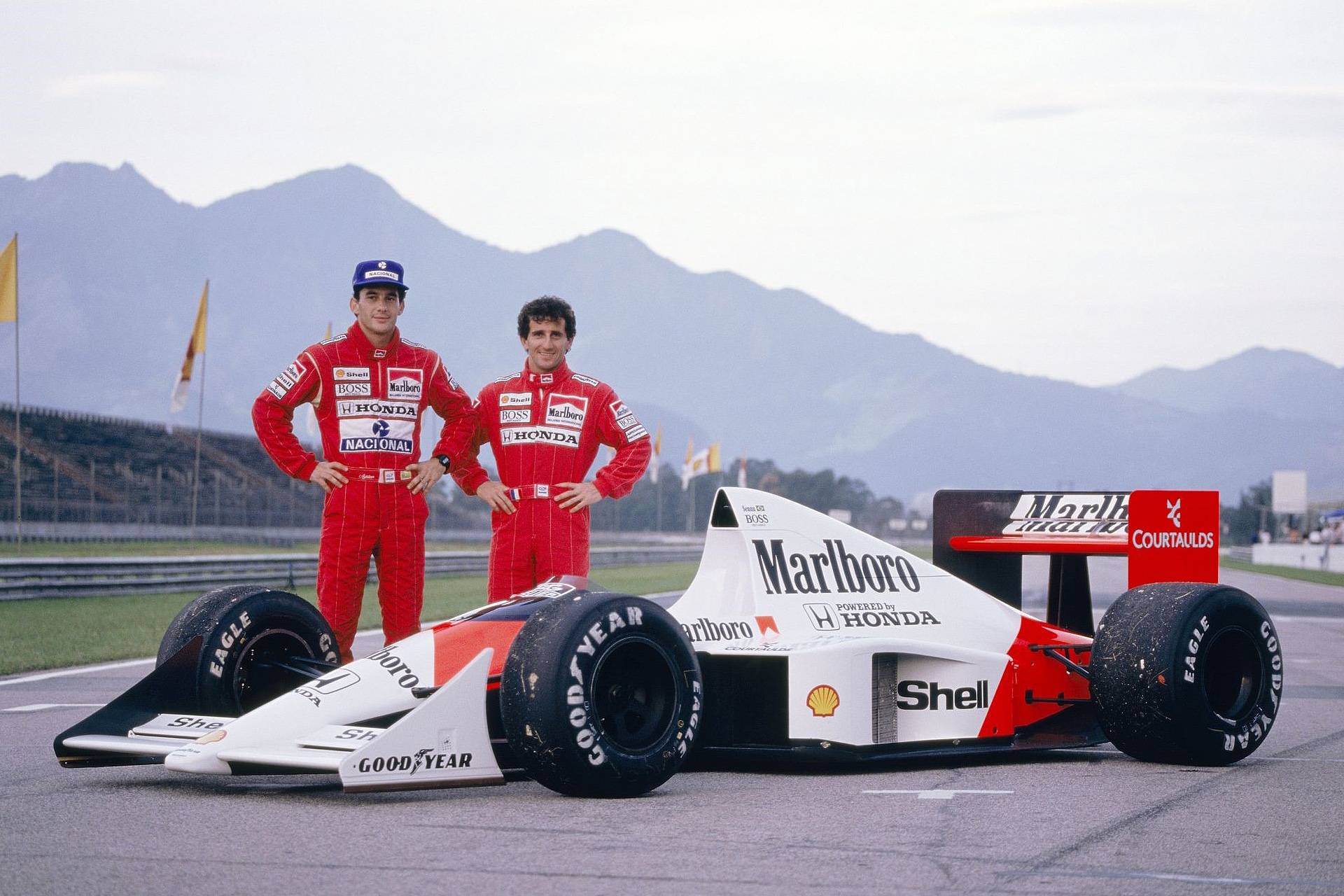Motor Racing History – 3.5-litre Naturally-Aspirated Engines, Active Suspension and Electronic Driver Aids
1989 was another McLaren year but this time the championship was won by Alain Prost. With turbos now banned the other teams were able to reduce their deficit to the Hondas. During the season there were six different winners. With Nigel Mansell joining Gerhard Berger at Ferrari. Many thought his move to Ferrari was risky wondering how he would fit in with the Italian team.
Seeing the very British Mansell at Ferrari must have been very jarring to his fans. So desperate was Ferrari’s desire to return to the top rank of Formula 1 that they had offered the British designer John Barnard, in 1987 an enormous salary and the opportunity to establish a new Ferrari Technical Centre in England. Mansell would be driving John Barnard’s first completely designed Ferrari, the F189, or Project 640 as it was called at Ferrari which featured a seven speed semi-automatic electronic gearbox, the first of its kind in Formula 1.
Barnard interviewed by MotorSport magazine in 2005 said
“The project started because I wanted to make the monocoque really narrow. In those days we had to fit a gearshift run through the monocoque alongside the engine and back to the gearbox. It was a real pain to find a route for this and make room in the cockpit for the selector and the driver’s hand. I thought, Surely, instead of a gear lever, I can have a switch.”
The new head of engines at Ferrari, Claudio Lombardi opted for a lightweight 3.5L V12 with 4 camshafts and 5 vales per cylinder – 2 of which were for exhaust. Unfortunately reliability was a problem throughout the year, with Ferrari not once getting both cars to the finish. When the car did finish however, it was always on the podium, including two wins for Mansell and one for Berger at the Portuguese Grand Prix giving Ferrari 59 points and third place in the Constructor’s Championship. This proved insufficient for Ferrari and the team and Barnard parted ways at the end of the season.
Williams would be powered by Renault engines for the season in a partnership that would last nine years. The engine supplied was the RS1, which introduced the first pneumatic valved 3.5 V10 engine in Formula One. The team would begin the season with an update of last years car to incorporate the new engine. The FW13 designed by Argentine Enrique Scalabroni would not be ready until late in the season, at the Portuguese Grand Prix. According to Peter Windsor when he first met Scalabroni
“He’d turn up every morning in a local cab and always leave late at night – also in a local cab”. He was told by the Argentinean that he didn’t drive, not trusting himself behind the wheel with so many thoughts coursing through his head he would be a danger to others as well as to himself!
Belgian Thierry Boutsen was now partnered with Ricardo Patrese. Boutsen had gained a reputation as a reliable, fast driver who was also good at developing a car. He would reward Williams with two wins during the season and the team would recover from last year and finish second to McLaren in the Constructor’s Championship. Patrese’s steady driving allowed him to finish third amongst the drivers after Prost and Senna. Patrese was followed in the standings by Mansell who scored 2 wins, 7 retirements and 2 disqualifications which can only be regarded as a ragged season.
During practice at the Grand Prix of Monaco Prost revealed his growing disgust with Senna, giving as an example an agreement that if they were leading, whoever won the start would not be challenged by the other at the first corner, an agreement he previously had with former team mates Niki Lauda and Keke Rosberg and one which Senna denied. As the season reached to Suzuka in Japan the season took an ugly turn. Ayrton Senna trailed Alain Prost by 16 points in the standings, meaning the Brazilian needed to win both Japan and the final race in Australia to retain his world championship crown.
At Suzuka, though Senna had obtained the pole position, it was Prost who made the better start and Senna would chase the Frenchman the entire race. With his dreams of retaining his crown getting dimmer with each lap Senna dove for a gap at the chicane before the start-finish straight. Prost closed the gap as he earlier swore he would and the two made contact and skidded into the escape road whereupon the Frenchman abandoned his car but Senna not willing to quit, got a push from the marshals and returned to the track through an escape road which was often done in these types of incidents. Having passed the race leader and thinking himself the victor he was disqualified for using the escape road and an elated Alessandro Nannini was awarded his first grand prix victory. McLaren went to appeal the decision.
Senna was beside himself and went on record saying it was a plot against him by FIA and FISA president Jean Marie Balestre who he said favored fellow countryman Alain Prost. After much wrangling and protestations from both parties the appeal was denied.
To be continued …













